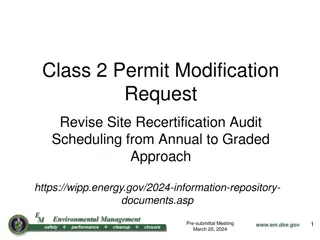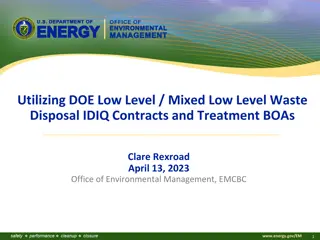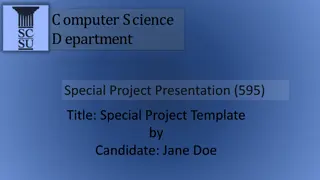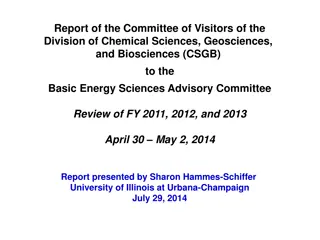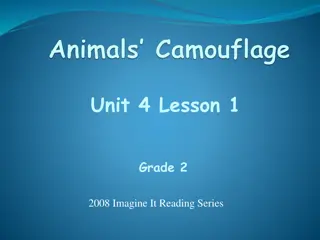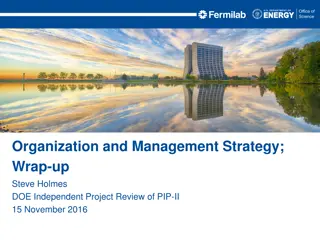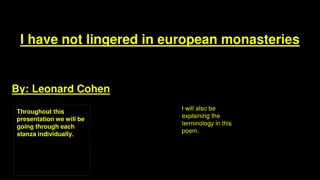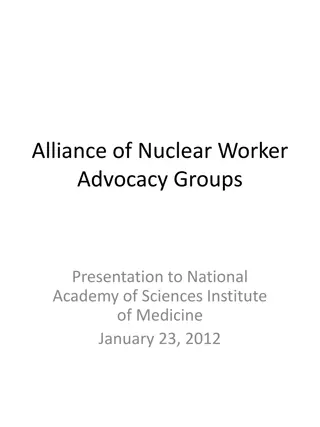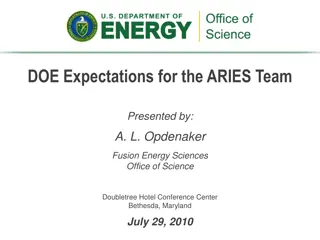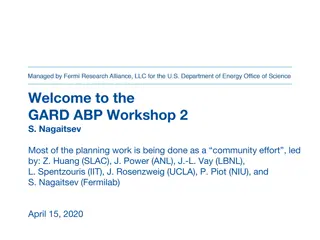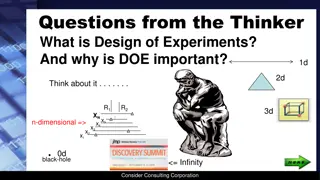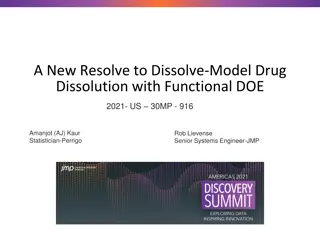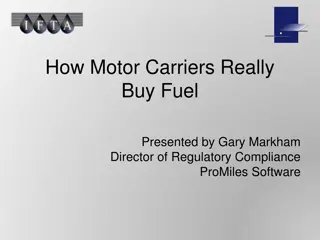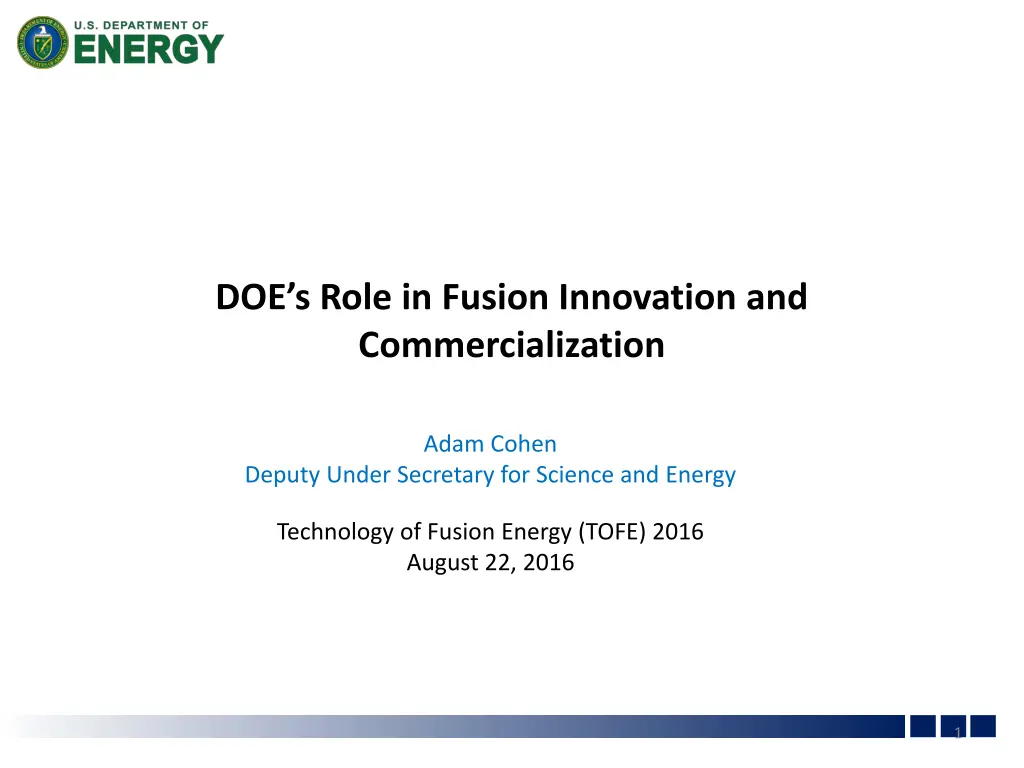
DOE's Role in Fusion Innovation and Commercialization
The Department of Energy plays a critical role in researching and developing innovative technologies for future energy solutions, supporting a wide spectrum of energy-related activities. Fusion energy development aligns with the DOE's overall strategy, emphasizing innovation and commercialization of energy-relevant technologies.
Download Presentation

Please find below an Image/Link to download the presentation.
The content on the website is provided AS IS for your information and personal use only. It may not be sold, licensed, or shared on other websites without obtaining consent from the author. If you encounter any issues during the download, it is possible that the publisher has removed the file from their server.
You are allowed to download the files provided on this website for personal or commercial use, subject to the condition that they are used lawfully. All files are the property of their respective owners.
The content on the website is provided AS IS for your information and personal use only. It may not be sold, licensed, or shared on other websites without obtaining consent from the author.
E N D
Presentation Transcript
DOEs Role in Fusion Innovation and Commercialization Adam Cohen Deputy Under Secretary for Science and Energy Technology of Fusion Energy (TOFE) 2016 August 22, 2016 1
Bottom Line Up Front The Department of Energy has a role in researching and developing ideas and technologies that can provide for future energy solutions Innovation will be vital to meeting the nation s clean energy and climate goals The Department supports research and development activities across a wide range of the energy spectrum, from generation through end use, and in the underlying science to support such developments Fusion energy development fits within the overall strategy This includes research in plasma physics with eventual application toward fusion energy and other energy technologies The Department promotes innovation and commercialization of energy-relevant technologies UNDER SECRETARY for SCIENCE and ENERGY 2
Project Growth in Total Energy Supply and Demand Growth in Energy (Reference Case) 110.00 108.00 106.00 104.00 Energy, quadrillion BTU 102.00 100.00 Supply Demand 98.00 96.00 94.00 92.00 90.00 2015 2016 2017 2018 2019 2020 2021 2022 2023 2024 2025 2026 2027 2028 2029 2030 2031 2032 2033 2034 2035 2036 2037 2038 2039 2040 Reference: Energy Information Agency (EIA), Annual Energy Outlook 2016 Website 4
U.S. Electricity to the Grid (Billion kWh) 5,000 4,500 4,000 3,500 3,000 2,500 2,000 1,500 1,000 500 Source: EIA AEO 2016 Appendix Table 8 0 2010 2015 2020 2025 2030 2035 2040 5
80% Renewable Energy Case - Conservative Reference: NREL Renewable Electricity Futures Study 2010, http://www.nrel.gov/analysis/re_futures/ 6
CO2 Emissions for 80% Renewable Energy Cases - Conservative Reference: T. Mai, et al, Envisioning a renewable electricity future for the United States Energy, 2014 7
Falling Costs for Clean Energy Technologies Wind: Representative LCOE excluding PTC, inflation adjusted Utility and Distributed PV: Installed $/WattDC, inflation adjusted Batteries: DOE/VTO modeled high volume production costs LEDs: cost/kilolumen Reference: DOE s Revolution Now 2015 Report UNDER SECRETARY for SCIENCE and ENERGY 8
Department of Energy A technological powerhouse U.S. must be a builder and a leader in this new economy DOE has three basic thrusts: weapons, waste and watts Science and energy portfolios under a single Under Secretary Enhance enterprise-wide planning and improve collaboration across organization boundaries (i.e., breaking down stovepipes) Crosscutting initiatives Advanced Materials Energy-Water Nexus Grid Modernization Subsurface Technology and Engineering Exascale Computing Cyber Security Supercritical CO2 Technology Transitions Technology Commercialization Fund (TCF) UNDER SECRETARY for SCIENCE and ENERGY 9
DOE Planning Strategic Plan Quadrennial Technology Review (QTR) Survey of the technology state and gaps Electric Power System (the Grid) Advanced Clean Electric Power Building Efficiency Advanced Manufacturing Cleaner Fuels Clean Transportation Underlying Science Quadrennial Energy Review (QER) Consider policy options, markets, technology, etc. as an overall system Second Installment (1.2) focus on electricity sector Portfolio planning Brainstorming Big Ideas Summits Budget formulation UNDER SECRETARY for SCIENCE and ENERGY 10
DOE Big Idea Summit 2016 Enhancing the Global Carbon Sink Greenhouse Gas Emissions Reporting & Analysis System (GHG-ERAS) Hydrogen @ Scale: Deeply Decarbonizing our Energy System Solving Big Problems with Small Accelerators Transportation as a System Solving the Information Technology Energy Challenge Beyond Moore s Law Advancing Biomanufacturing: The SynBio Foundry Energy Everywhere: Clean Energy through Modular Chemical Conversions Metropolitan Energy Initiative UNDER SECRETARY for SCIENCE and ENERGY 11
Mission Innovation Paris Agreement (Climate Conf - COP21, November 2015) Mission Innovation 20 Countries committing to doubling of energy R&D over next 5 years Breakthrough Energy Coalition parallel effort to have patient capital investments for early to mid-stage innovation Great start but the world has to continue to create and innovateand invest in technologies if we re to avert the worst outcomes of climate change DOE s Mission Innovation portfolio is ~ 75% of the U.S. portion Fusion is part of the portfolio Need innovation to address reduction in GHG across all sectors (e.g., power, industrial applications, transportation) UNDER SECRETARY for SCIENCE and ENERGY 12
Areas for Consideration Fusion as an energy source Models are only as good as models are .. Worst case future is fusion energy is needed but not available! Don t ignore other energy needs and sectors Knowledge as applied to other generation (e.g., improved thin film processing of photovoltaics, processing of wind turbine blades) Big ideas applied to transportation needs or industrial process heat Purification of power plant waste streams? Purification of water? Advanced Manufacturing Plasma processing knowledge Areas of particular interest or importance to the fusion field (e.g., superconducting cables for magnets, materials for really extreme environments) UNDER SECRETARY for SCIENCE and ENERGY 13
IAEA, Technology Roadmap Energy and GHG Reductions in the Chemical Industry via Catalytic Processes, 2013 14
DOE Path Forward in FES DOE planning for burning plasma science era and opportunities in fusion science to maintain U.S. leadership in the pursuit of fusion power ITER Exciting experiment commencement of the burning plasma science era and enable questions critical to advancing fusion energy to be researched May 2016 U.S Participation in the ITER Project Report - U.S. remain a partner in the ITER project through FY 2018 and focus on efforts related to First Plasma DOE to revisit this recommendation as part of the FY 2019 budget process DOE Fusion Energy Sciences (FES) Strategic Planning Community studies identify the key scientific and technical challenges tackled during the past decade and a half. Built upon the Research Needs Workshop (ReNeW) for Magnetic Fusion Energy Sciences in 2009 Fusion Energy Sciences: A Ten-Year Perspective (2015-2025) - study of burning plasma science using 1) Flexible U.S. experimental facilities, 2) International partnerships, 3) Numerical simulations based on validated models, 4) Advanced fusion-relevant materials, and 5) New measurement techniques Non-fusion applications - FES published the Applications of Fusion Energy Sciences Research: Scientific Discoveries and New Technologies Beyond Fusion in 2015 outlines contributions across many fields UNDER SECRETARY for SCIENCE and ENERGY 15
Questions? 16

